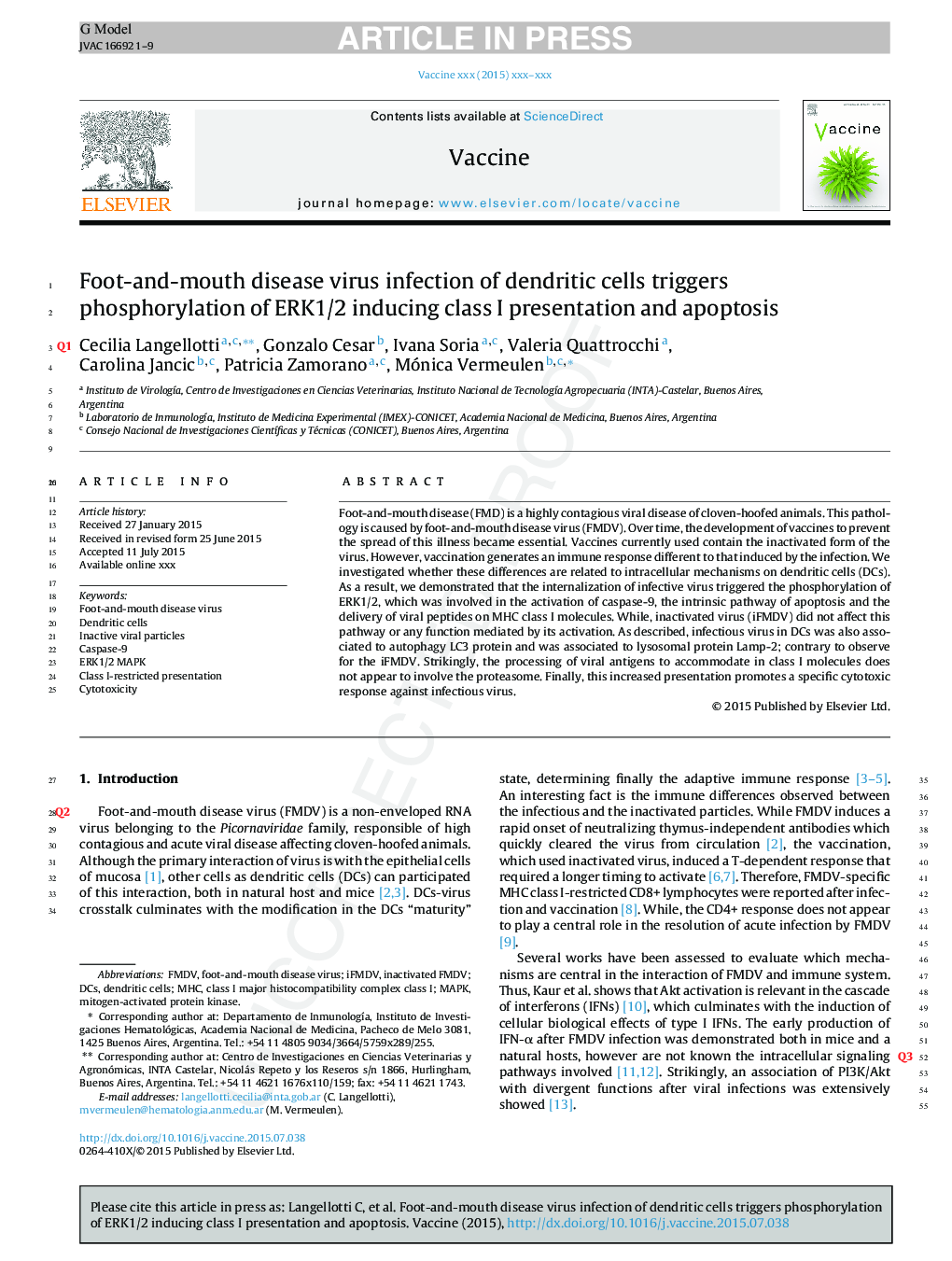| Article ID | Journal | Published Year | Pages | File Type |
|---|---|---|---|---|
| 10963566 | Vaccine | 2015 | 9 Pages |
Abstract
Foot-and-mouth disease (FMD) is a highly contagious viral disease of cloven-hoofed animals. This pathology is caused by foot-and-mouth disease virus (FMDV). Over time, the development of vaccines to prevent the spread of this illness became essential. Vaccines currently used contain the inactivated form of the virus. However, vaccination generates an immune response different to that induced by the infection. We investigated whether these differences are related to intracellular mechanisms on dendritic cells (DCs). As a result, we demonstrated that the internalization of infective virus triggered the phosphorylation of ERK1/2, which was involved in the activation of caspase-9, the intrinsic pathway of apoptosis and the delivery of viral peptides on MHC class I molecules. While, inactivated virus (iFMDV) did not affect this pathway or any function mediated by its activation. As described, infectious virus in DCs was also associated to autophagy LC3 protein and was associated to lysosomal protein Lamp-2; contrary to observe for the iFMDV. Strikingly, the processing of viral antigens to accommodate in class I molecules does not appear to involve the proteasome. Finally, this increased presentation promotes a specific cytotoxic response against infectious virus.
Keywords
Related Topics
Life Sciences
Immunology and Microbiology
Immunology
Authors
Cecilia Langellotti, Gonzalo Cesar, Ivana Soria, Valeria Quattrocchi, Carolina Jancic, Patricia Zamorano, Mónica Vermeulen,
